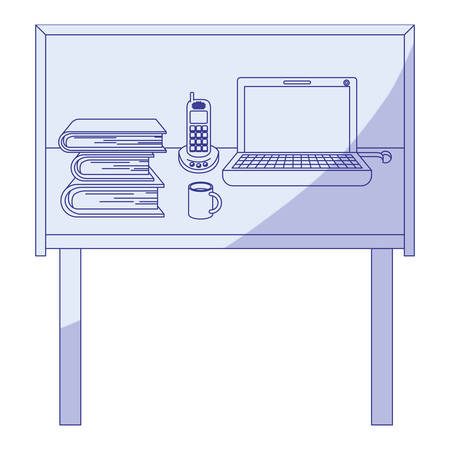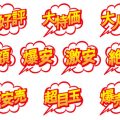Introduction to Modern Feng Shui in the American Workplace
In today’s fast-paced business world, companies across the United States are looking for ways to create healthier, more productive work environments. One approach that has gained popularity is Feng Shui, an ancient Chinese practice focused on harmonizing people with their surroundings. While traditionally rooted in Eastern philosophy, modern Feng Shui has been adapted to suit contemporary office spaces and American work culture.
What is Feng Shui?
Feng Shui translates to “wind” and “water,” symbolizing the flow of energy—known as “chi”—in a space. The core idea is that when this energy moves freely, it brings health, success, and well-being. In office design, Feng Shui principles can help reduce stress, improve focus, and foster better collaboration among employees.
Key Principles of Feng Shui
| Principle | Description | American Office Adaptation |
|---|---|---|
| Balance (Yin & Yang) | Creating harmony between opposite elements | Mixing bright and soft lighting, adding both energetic and calming décor |
| The Five Elements | Wood, Fire, Earth, Metal, Water—each brings unique qualities | Introducing plants (wood), artwork (fire colors), stone accents (earth), metal frames (metal), and water features or blue hues (water) |
| Clear Pathways | Unobstructed flow of energy throughout the space | Arranging furniture to keep walkways open and clutter-free |
| Command Position | Placing important desks or seating where you can see the door without being directly in line with it | Strategically locating managers’ desks for visibility and a sense of control |
| Decluttering | Removing unnecessary items to allow energy to flow smoothly | Encouraging clean desks and organized common areas |
Adapting Feng Shui for the Modern U.S. Office
Unlike traditional spaces, American offices often feature open floor plans, shared workstations, and diverse teams. Modern Feng Shui acknowledges these differences by blending time-tested techniques with a fresh perspective that matches local work habits and aesthetics. For example, while a classic Feng Shui office might prioritize solid wood doors and private offices, an American workplace may use partitions or plants to define space while still encouraging collaboration.
Benefits Employees Notice Most:
- Improved concentration from less visual clutter
- A boost in morale from natural light and greenery
- Easier communication thanks to thoughtful layouts
- A welcoming vibe that makes the office feel inviting for everyone—from interns to clients
By combining traditional concepts with modern design solutions, businesses can create workplaces that feel good and function even better. This approach not only supports employee wellness but also aligns with the values of many American organizations striving for innovation and inclusivity.
2. Space Planning: Balancing Functionality and Energy Flow
Understanding Modern Feng Shui for American Offices
Modern Feng Shui is all about creating spaces that feel good, look professional, and support productivity. In American offices, this means blending traditional energy flow concepts with practical layouts that match today’s work culture. Whether you’re arranging furniture in an open workspace or setting up a private office, thoughtful planning can boost both wellness and efficiency.
Guidelines for Arranging Office Furniture
| Workspace Type | Feng Shui Guideline | How It Helps |
|---|---|---|
| Open Workspace | Use low partitions to define personal areas while maintaining visibility. Avoid placing desks directly in line with doors or heavy foot traffic. | Encourages collaboration, reduces distractions, and supports focus by controlling energy flow (Chi). |
| Private Office | Position the desk so the user faces the door (the “command position”), but not directly in line with it. Keep the back to a solid wall if possible. | This increases a sense of security and control, reducing stress and improving concentration. |
| Shared Conference Room | Arrange chairs in a circular or oval shape for balanced communication. Place the main table away from sharp corners and busy hallways. | Promotes equality and smooth energy during meetings, making conversations more productive. |
Balancing Functionality with Energy Flow
Zoning Work Areas
Create distinct zones for different activities—such as quiet zones for focused work, collaborative spaces for teamwork, and relaxation corners for breaks. Use area rugs, plants, or shelving units to subtly separate these areas without blocking natural movement.
Maximizing Natural Light and Airflow
Arrange desks to take advantage of windows and daylight whenever possible. Natural light energizes employees and keeps the workspace vibrant. Avoid blocking vents or air pathways with large furniture; fresh air helps maintain a healthy environment and good Chi circulation.
Quick Tips for Everyday Balance
- Keep walkways clear to allow easy movement—clutter disrupts both function and energy flow.
- Add greenery like small potted plants; they purify air and bring calming vibes into the space.
- Choose ergonomic chairs and adjustable desks to support well-being alongside Feng Shui principles.
- Avoid sitting under exposed ceiling beams or in cramped corners—these spots can drain energy over time.
By applying these modern Feng Shui space planning guidelines, American offices can become more inviting, supportive environments where everyone feels empowered to do their best work.

3. Incorporating American Design Elements with Feng Shui
When designing American office spaces, it’s important to blend popular local design trends with traditional Feng Shui principles. This approach not only creates a visually appealing environment but also helps promote productivity, comfort, and positive energy flow. Let’s explore how you can combine iconic American styles—like industrial and mid-century modern—with Feng Shui for a workspace that feels both fresh and balanced.
Industrial Style Meets Feng Shui
The industrial look is all about exposed brick, metal accents, and open layouts. While this style is very trendy in American offices, it can sometimes feel cold or harsh. Here’s how to soften industrial elements using Feng Shui:
Industrial Feature |
Feng Shui Enhancement |
|---|---|
| Exposed Brick Walls | Add wood shelving or green plants to introduce the Wood and Earth elements for warmth. |
| Metal Furniture | Balance with soft textiles like area rugs or cushions in earth tones for comfort and harmony. |
| Open Ceilings & Pipes | Use hanging light fixtures or fabric panels to lower the ceiling visually, making the space feel cozier. |
Mid-Century Modern with Feng Shui Flow
Mid-century modern design is characterized by clean lines, natural woods, and pops of color—features that work well with Feng Shui if applied thoughtfully:
- Natural Materials: Choose wooden desks and chairs to enhance the Wood element, which supports growth and creativity.
- Pops of Color: Select accent colors based on the Five Elements. For example, blue for Water (calmness), green for Wood (growth), or yellow for Earth (stability).
- Sleek Shapes: Maintain open pathways between furniture to ensure good Chi flow throughout the office.
Blending Styles: Practical Tips
- Layout Matters: Arrange desks so employees face the door but are not directly in line with it—a classic Feng Shui practice called “command position.” This works well with both open-plan and private offices.
- Biophilic Touches: Incorporate indoor plants no matter your design style. Plants help purify air and bring vibrant energy into any workspace.
- Personalization: Encourage team members to personalize their spaces with photos or meaningful objects, as long as desks stay clutter-free for optimal energy flow.
Combining Design Trends & Feng Shui Elements: Quick Reference Table
American Trend |
Feng Shui Element |
How to Blend Them |
|---|---|---|
| Industrial Exposed Materials | Earth & Wood | Add plants and wooden accents to balance metal and stone surfaces. |
| Mid-Century Clean Lines | Water & Fire | Add water features or red/orange decor pieces for energy and calmness. |
| Open Layouts | All Five Elements | Create zones using rugs, lighting, and furniture placement to represent different elements. |
4. Practical Tips for Energy Enhancement
Bringing Nature Indoors: Using Plants for Positive Vibes
Plants are a cornerstone of Feng Shui and have become increasingly popular in American offices for their ability to purify air, reduce stress, and boost productivity. Choose easy-care options that align with both Feng Shui principles and busy work schedules.
| Plant | Feng Shui Benefit | American Office Appeal |
|---|---|---|
| Pothos | Encourages growth and resilience | Low maintenance, versatile placement |
| Snake Plant | Protects against negative energy | Tolerates low light and infrequent watering |
| Bamboo | Symbolizes luck and prosperity | Sleek look fits modern décor |
| Peace Lily | Cleanses energy and promotes calmness | Elegant appearance, effective air purifier |
Lighting: Creating a Balanced Workspace Atmosphere
Good lighting is essential for both productivity and positive energy flow. In American offices, blending natural and artificial light helps employees feel energized throughout the day.
- Maximize Natural Light: Arrange desks near windows when possible. Use sheer curtains to diffuse harsh sunlight without blocking it completely.
- Add Adjustable Lamps: Desk lamps with adjustable brightness let employees control their own environment for comfort and focus.
- Avoid Overhead Glare: Choose warm-toned LED bulbs and use diffusers to soften intense ceiling lights.
Color Schemes: Blending Feng Shui with American Tastes
The right color palette can set the tone for any workspace. Both Feng Shui and modern office design recognize the power of color in shaping moods and boosting productivity. Here are some practical combinations:
| Color Scheme | Feng Shui Element | Mood & Purpose | Cultural Fit in U.S. Offices |
|---|---|---|---|
| Soft Green & Earth Tones | Wood & Earth Elements | Nurturing, stable, focused atmosphere | Inviting and calming for collaborative spaces |
| Pale Blue & Gray Accents | Water Element | Promotes clear thinking and communication | Sleek, professional look ideal for meeting rooms |
| Energizing Yellow & White | Metal Element | Lifts mood, encourages optimism | Brightens open-plan offices without overwhelming |
| Toned-Down Red or Orange Highlights | Fire Element | Sparks creativity when used sparingly | Adds vibrancy to break areas or creative corners |
Décor Choices: Personal Touches with Purpose
Décor items bring character to an office while supporting balanced energy. Select pieces that reflect your brand, values, or team spirit—without cluttering the space.
- Artworks: Choose images that inspire positivity, such as nature scenes or abstract designs in uplifting colors.
- Mementos: Display awards or motivational quotes that reinforce company culture—keep them organized to avoid visual chaos.
- Smooth Flow: Keep walkways clear of obstacles and arrange furniture so people can move freely—good circulation supports both energy flow (chi) and collaboration.
- No Sharp Edges: Rounded furniture edges are preferred in Feng Shui because they soften energy flow and help prevent stress.
Your Next Step: Mix Tradition with Modern Style
You don’t need a total office overhaul to see benefits from these tips. Start small by adding one or two plants, updating your desk lamp, or painting an accent wall. The key is combining tried-and-true Feng Shui principles with what feels comfortable and motivating in your unique American workplace environment.
5. Fostering Collaboration and Well-being
Encouraging Teamwork Through Thoughtful Space Design
Modern Feng Shui is not just about furniture placement—it’s also about creating environments where people feel connected, inspired, and valued. In American offices, open communication and teamwork are vital. By intentionally designing communal spaces, meeting rooms, and break areas, you can spark creativity and support employee happiness.
Recommendations for Communal Spaces
| Element | Feng Shui Principle | Practical Application |
|---|---|---|
| Seating Arrangement | Circle or U-shape to promote equality and inclusion | Arrange chairs in a way that everyone faces each other during discussions |
| Natural Elements | Balance of wood, plants, and natural light for vitality | Add indoor plants, use wooden tables, maximize window exposure |
| Color Scheme | Calming tones with energetic accents | Choose neutral backgrounds with pops of blue or green for focus and calmness |
| Flow of Movement | Avoid physical barriers to encourage openness | Keep walkways clear; use low dividers or none at all between workstations |
Optimizing Meeting Rooms for Creativity and Comfort
- Round Tables: Use round or oval tables to symbolize unity and reduce hierarchy.
- Good Lighting: Ensure both natural and adjustable artificial lighting to keep the atmosphere lively but comfortable.
- Avoid Clutter: Keep meeting rooms tidy and store extra equipment out of sight to reduce distractions.
- Scent and Sound: Add subtle scents like citrus or lavender and play soft background music if appropriate—these uplift mood and boost creative thinking.
Cultivating Relaxation in Break Areas
- Diverse Seating: Provide couches, small tables, and even standing options so employees can choose how they want to relax or socialize.
- Nourishing Refreshments: Offer healthy snacks, water stations, and perhaps a coffee machine—showing care for well-being aligns with Feng Shui values.
- Artwork & Inspiration: Hang positive artwork or motivational quotes that reflect the company culture and encourage positive energy.
- Zoning: Separate quiet corners for relaxation from more social spots to cater to different needs during breaks.
The Benefits of a Collaborative Environment
By applying these modern Feng Shui techniques in American offices, you can create spaces that nurture teamwork, spark new ideas, and make employees feel at home. Small changes in layout, color, lighting, and amenities can have a big impact on workplace satisfaction and productivity.


